Teachers of the APY Lands reveal the truth about living and working in the centre of Australia
A French national raising her young family is one of the dozens of educators who have uprooted their lives to teach in some of the most remote, and underprivileged, schools on the planet.
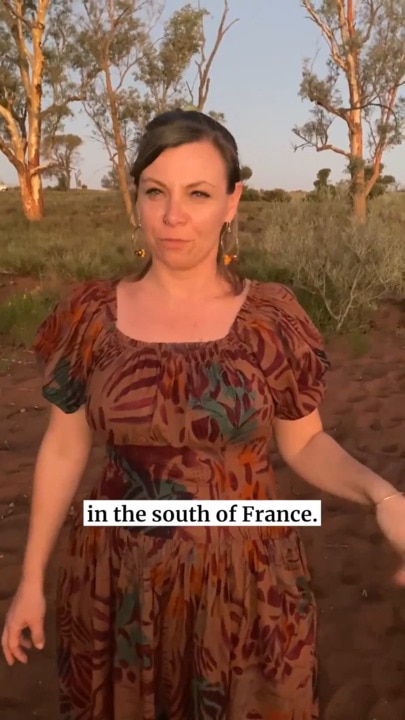
SA Weekend
Don't miss out on the headlines from SA Weekend. Followed categories will be added to My News.
We’re a long way from the lavender fields, sunflowers, mountains and medieval villages of southern France where she grew up.
But here in the APY Lands, where wild dogs, donkeys and brumbies roam a landscape dominated by red dust, the temperature soars into the 40s and abandoned cars line the roads, Sara Porzio is home.
We’re in the tiny Anangu community of Fregon, also known as Kaltjiti, in the northwest of South Australia, about 1300km from Adelaide.
Well, the map says we’re still in SA but the 300-or-so people who call Fregon home officially operate on Northern Territory time, just like those in the rest of the sparsely populated Anangu Pitjantjatjara Yankunytjatjara Lands.
It doesn’t really matter what the map says though, because life out here is so different to the rest of Australia we could be forgiven for thinking we are in a different country.
English is the second language of the Anangu. Pitjantjatjara is the tongue of choice around these parts – has been for thousands of generations. It’s a language Porzio, principal at Fregon Anangu School, has become fluent in.
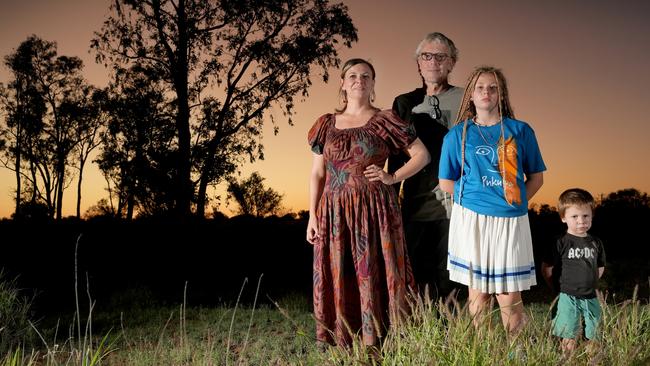
That’s what happens when you live in a place for so long. Porzio, now 38, has been teaching at Fregon since 2017. Her husband Randall Reissig and their daughter Nessarose, then six, moved up from Adelaide in 2018. They shifted back to the big smoke to have son Ezra in 2021 but the call of the Lands was strong and they returned a couple of years later.
“I fell in love with the landscape and I fell in love with the kids. I just connected,” she says as we chat in her office at the soon-to-be-renovated Fregon school.
“I love visiting my home country (France). It’s great … I have family there, but I’m very happy with the life that we’ve built here, with my family and with the Anangu families that I’m very connected to and through the school.”
But we’re getting ahead of ourselves here.
First, we need to wind back the clock to her high school days to discover how a young French girl with an adventurous nature would one day find herself teaching at one of the most remote schools on the planet.
Porzio was in year 12 in the southern French town of Courthezon, near Marseille about 800km south of Paris, when she became mates with an Australian girl on an exchange program from Broken Hill.
The young Sara Porzio had always loved languages, especially English – a passion fuelled by frequent visits to a New York-based uncle. But after spending a gap year Down Under visiting her new friend she was sold on the remote nature of Australia and its comparatively chilled inhabitants.
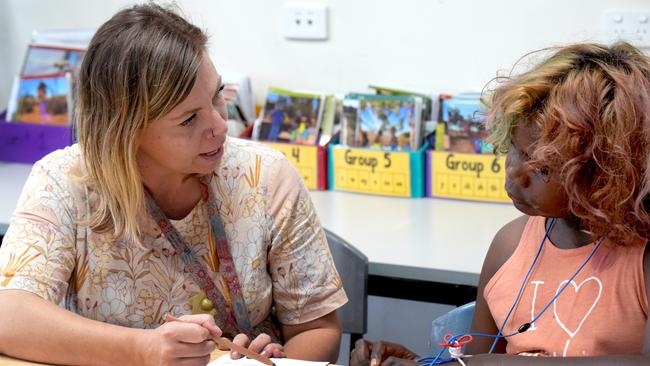
She went back to Europe to study English and teaching French as a foreign language, returned to Australia for the final semester and landed in SA thanks to a partnership between the universities of Avignon and Adelaide. She taught French at the Alliance Francaise in Wayville, University of Adelaide and then Annesley Junior school before returning to study to complete a masters degree.
As part of her masters, in 2016, she jumped at the chance to attend a field trip to the APY Lands, spent two weeks at Pipalyatjara (about 10km from the corner of the SA, NT and WA borders) and fell in love with the landscape and people of The Lands.
She accepted a teaching position at Fregon (about 320km east of Pipalyatjara), returned from her hiatus down south as deputy principal in 2023, stepped up to the top job last year and next week, when children file in for the start of the 2025 school year, she will be there again.
Porzio concedes the differences between her hometown in France and Fregon are vast, but she’s passionate as she explains why she is choosing to live, work and bring up her children here.
“What you do have, though, is a very, very ancient history (here in Fregon),” she says.
“I think that’s why it connected with me and there’s so much knowledge and so much understanding of that landscape and that country that Anangu have and I’ve been lucky to have some glimpses into it. They’ve shared some stories and they’ve taken me out bush and I guess that’s the thing that kept me here.”
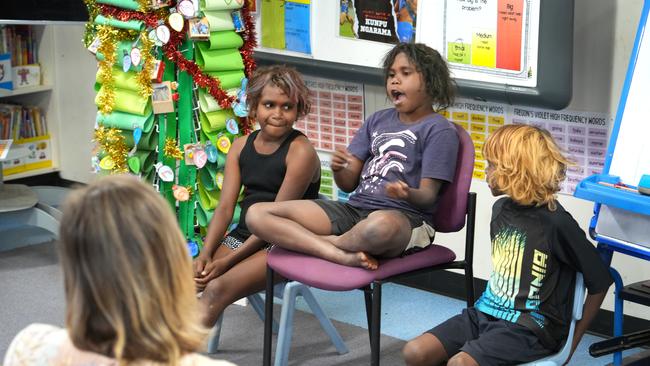
Children Nessarose, now 13, and Ezra, three, have both been given Anangu names by their community and attend the school run by their mother. Reissig is a former welder, restaurant manager (the couple owned and ran French bistro L’Atelier Gourmand in Goodwood for a few years in the mid 2010s) and Adelaide City Council worker who is now employed as the school’s groundsperson/maintenance guru.
The couple met when she first arrived in Australia. Reissig’s parents are from Germany, and since France and Germany are neighbouring countries, a mutual friend figured they might get along. The couple have long since chuckled about how the occurrence of two reasonably significant world wars might have challenged that assumption, but their friend proved to be right.
Porzio also fell in love with Australia, its people, their connection with nature, the landscape, and even the magnificent clear skies.
All of these attributes are magnified tenfold here in the APY Lands, where she is one of 79 piranpa (the Pitjantjatjara word for non-Aboriginal) teachers across eight schools charged with educating the children of the Lands.
Many of the teachers here are fresh graduates, lured to the Lands by the promise of adventure, the chance to live and learn from the oldest culture on the planet and to kickstart their careers at some of the most challenged schools in the country.
There are also significant monetary benefits. All accommodation and utility bills are fully subsidised. They receive a one-off payment of $1112 to cover incidentals, an extra $10,737 a year for living so remotely, regardless of their pay rate, plus an additional allowance based on a percentage of their annual salary.
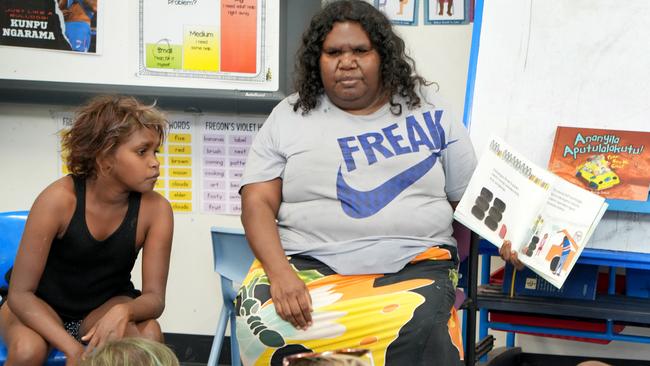
Many of the young teachers use the financial fillip of working in the Lands to buy their first home back in Adelaide. Many of them return to the big smoke after four years, but some are so besotted by both the landscape, the lifestyle and the people they stay longer.
Nikki Press, 29, is a former Riverland girl who is now the early years learning co-ordinator about to enter her eighth year as a preschool teacher at Indulkana Anangu School – in the community also known as Iwantja, just a few kilometres off the Stuart Highway.
Like Porzio, she accepted a two-week posting in the Lands in her final year of university (in 2017) and loved it so much she immediately applied for a full-time job here.
Now, more than eight years later, she’s one of the longest serving piranpa at the school with about 60 children on its books.
Like other schools in the Lands, each white teacher at Indulkana is joined in the classroom by an Anangu educator and the pair bounce off and learn from each other as they guide the children. Press is animated as she describes why she loves teaching alongside the Anangu and living in their community.
“It’s such a beautiful place where you get to live among a culture that’s over 65,000 years old,” she says. “It’s the longest living ongoing culture in the world and you get to live amongst it, and you get to meet these people that have this gorgeous language, and they’ve got gorgeous traditions, and we’re lucky enough to bear witness to some of it, and to be involved in their children’s lives and education.”
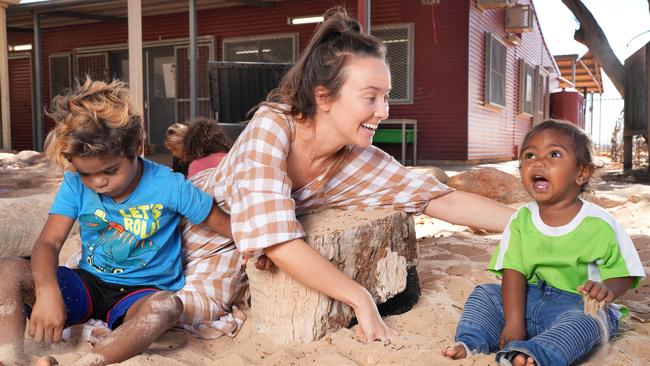
Press uses the term “ngapartji ngapartji” to describe the two-way flow of information between the piranpa and Anangu. It’s a Pitjantjatjara term that aligns with the English concepts of reciprocity and co-operation and we hear it often as we visit the schools of the Lands.
“It’s just really special, and I’m so grateful to be part of that,” Press continues. “And I think that anybody that comes out here will come away with a positive and you will learn so much more than you ever teach.”
But it is, of course, not all rainbows and unicorns. APY Lands communities often find themselves at the pointy end of lists detailing crime rates for SA towns. They are among the most socio-economically challenged people in Australia and are often dealing with intergenerational trauma.
According to the latest Census, just 2333 people live on the Lands’ 102,359sq km – an area bigger than Iceland. Pitjantjatjara is the dominant language, followed by Yankunytjatjara.
Just 11 per cent of the population speaks only English at home. Unemployment among Anangu in the Lands runs at almost 40 per cent and 27 per cent leave school at year 9 or below.
Temperatures can hover for weeks in the mid 40s, roads are sometimes unpassable in the wet season, phone service is mostly non-existent when travelling outside of communities and electricity outages are common.
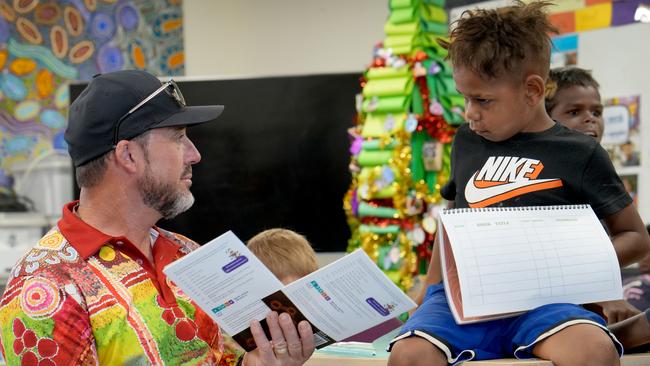
Most APY Lands towns have a general store that sells diesel and basic, though exorbitantly expensive, food. A punnet of mouldy raspberries, for example, can be north of $10 and a packet of Tim Tams is about $7. Diesel hovers around the $3 a litre mark.
But for teachers such as Press and Porzio, the positives of living here far outweigh the negatives. During a visit to Indulkana, Fregon, Mimili, Ernabella and Kenmore Park Anangu schools, every teacher we met speaks glowingly about the experience and how they have been welcomed into the Anangu communities.
Press met her partner Will Kearvell, 34, during an Easter break in Alice Springs early in her tenure at Indulkana. Kearvell, originally from Strathalbyn, became her neighbour when he landed a job in the same school and they soon became an item.
He takes over as principal at Mimili, about an hour west of Indulkana, this year. It’s a school forced to close twice in the past two years in the wake of escalating violence between feuding families. Like most schools in the Lands, Mimili Anangu School is protected by a head-high black, steel tubular security fence. These fences fail to keep out the hordes of dogs that are ubiquitous to Lands’ communities, spurred by uncontrolled breeding.
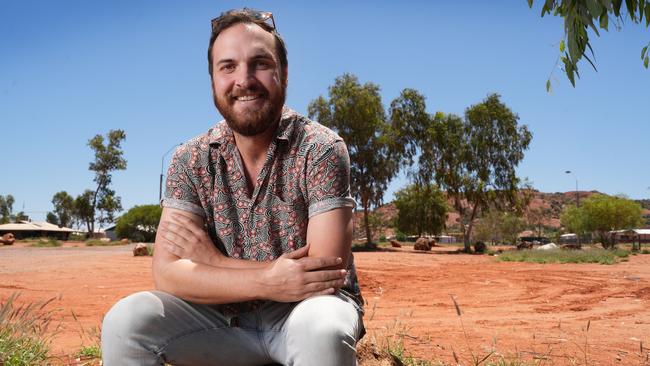
The dogs are a diverse range of crossbreeds who roam the towns and school grounds but their universal presence barely raises an eyebrow of locals, either inside or outside of the school gates. Mimili is also home to one of four swimming pools in the Lands.
Like every other teacher we speak with, Kearvell dismisses the common belief from down south that living on the Lands comes with a risk of personal danger because of high crime rates. “It (the perception of danger) is wildly blown out of proportion,” he says.
“The positive news stories up here outweigh the negative – I can’t even think of a number, but maybe 10-fold or 100-fold.
“The capacity for learning (in the Lands) is just incredible. The experiences from an educator’s perspective, the experiences that you have up here, you carry with you for the rest of your life. The relationships that you make are genuine. They’re authentic. There’s no tokenism in any relationships that you create up here.”
Relationships like the ones formed in the Mimili run and walk club created by teacher Brooke Webb, 25, last year in an effort to bring community members closer together. The community’s dusty football oval is now home to a walking, running or exercise session twice a week for children and adults alike.
Among its regular attendees is first-year teacher Ella Hadley, 21, who started at Mimili in term four last year while in the final year of her degree. “I’ve absolutely loved it up here, and within my first three weeks, I said yes to being up here for a full year (in 2025),” she says.
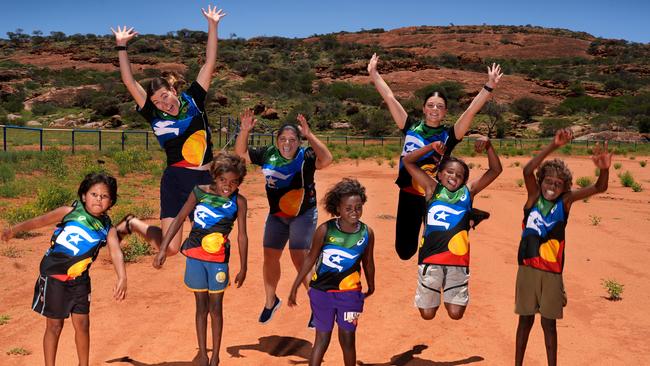
Kenmore Park is one of the smallest schools in the Lands. There are just two classes for the dozen or so students – one for the reception-to-year-six kids, another for those in years seven to 10. It’s staffed by a principal, two piranpa teachers, four Anangu educators and a full-time student support officer (SSO).
Like most schools in the Lands, there’s a high turnover of piranpa every year, and this year SSO Bree Boege, 31, will be the only one left from 2024. Originally from Wirrabara, near Port Pirie, Boege came to the Lands for a holiday to visit her mother (who was running an orchard at Kenmore Park) in 2018.
Six years later, she’s been embraced by the local Anangu family and spends her weekends with them hunting anything from goanna to kangaroos to cows.
“Kenmore is really peaceful, quiet … there’s no riff raff or anything,” she says as we chat in the school’s office.
“The serenity, the landscape … I just love it. I prefer the bush rather than the city, though. So, yeah, out here it just suits me fine.”
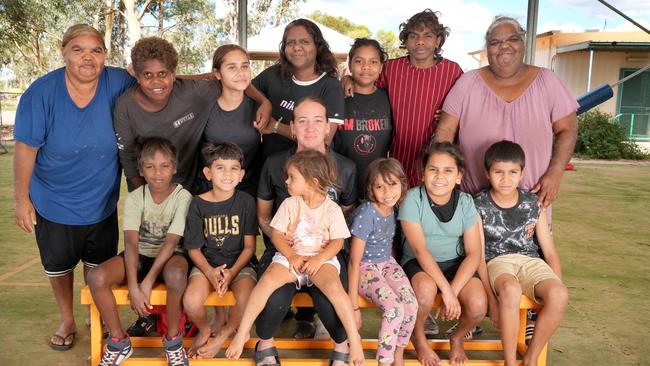
Less than an hour or so down the road, the community of Pukatja is home to Ernabella Anangu School, nestled in the foothills of the picturesque Musgrave Ranges.
SA’s tallest mountain, Mt Woodroffe (also known as Ngarutjaranya), is not too far away and the contrast of the red dusty plains, massive, red and ancient granite rocks and lush green of abundant spinifex and buffel grass make for a spectacular landscape.
Pukatja is renowned for the herds of wild donkeys that wander the streets, watching curiously as cars or humans on foot pass them by.
Here is where principal Terry Casey, 63, and teacher Chiara Cocchiarella, 31, will next week be among a dozen or so piranpa teachers welcoming 80 or so Anangu students to the new school year.
Cocchiarella taught in Adelaide for four years before transferring to Ernabella in 2021 and, like the other teachers we spoke to, says it is a privilege to be exposed to the culture and landscape of the Lands.
“As soon as I saw the country and got to hear language, I just thought, my gosh, this is such an incredible opportunity,” she says.
“Looking at the landscapes and the water holes … it’s an area that now is obviously owned by the Pitjantjatjara-Yankunytjatjara people, and it’s, you know, not everyone can just see this place.
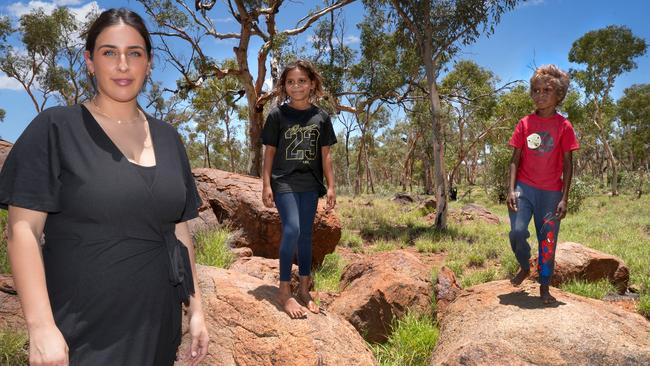
“When I hear language, it’s one of the oldest in the world, and I get to hear it and understand it and Anangu want to teach it and share that. How lucky, privileged and blessed am I to be around that.”
She says the most common question she faces from friends back in Adelaide is what does she do with her spare time. Alice Springs is the nearest major town and five hours away and there are no hotels or restaurants (the possession, consumption and sale of alcohol is banned in the Lands) so teachers have little option other than to create their own fun.
In winter, many become involved in the football-softball clubs where locals travel up to five hours or more to play matches, often without shoes, on dusty red-dirt ovals.
Post-school dinners and games nights are common and Cocchiarella hosts an open-house brunch every Sunday where they enjoy fresh bagels and a quiz.
“You do really wholesome things out here,” she says. “In the city, you’re running around and if you want pizza, you just go out and get pizza, whereas here, like, if you want pizza, you make it from scratch.
“I feel as though you’re more social here. You’re not running around all these appointments you do when you’re in the city. You’re being more present.”
Cocchiarella says being invited to help the Anangu find and eat bush food such as witchetty grubs (maku), honey ants (tjala), goanna (tjinka) and goanna eggs (ngampu) is a blessing she will never take for granted.
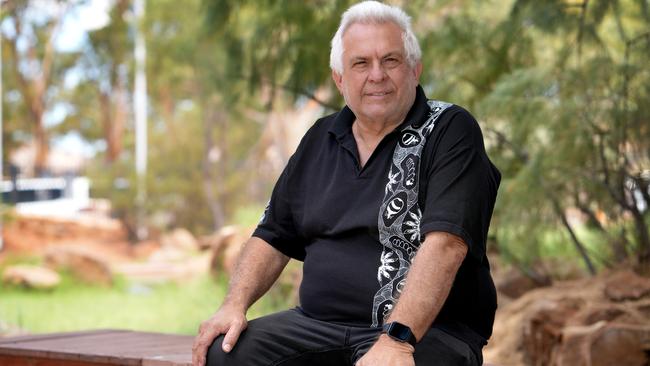
At 63, Casey is at the other end of his teaching career and part of a demographic of empty nesters who choose to teach in the Lands once their own children have flown the family coop.
Dani and Paul Tidswell, aged 44 and 49, are in the same cohort back at Fregon. Dani was a teacher at Parafield Gardens Primary school and Paul ran his own transport business in Adelaide, but the pair set themselves a goal to teach in the Lands as their sons, now aged 23 and 21, became more independent.
So Paul got some experience as an SSO and they moved to Fregon last year after reaching out to Porzio through mutual friends. They are back for another year in 2025 and, just like their younger boss, are passionate about their roles and the ngapartji ngapartji lifestyle they share with the Anangu.
They talk about the unique experiences they have enjoyed with the Anangu, such as digging for goanna eggs and honey ants or just sitting around a campfire out bush. The couple join us in Porzio’s office and, as we speak, the teacher in the French woman can’t help but come out and she writes down on sticky notes the spelling of Pitjantjatjara words for me as they pop up in conversation.
Malpa, for example, is Pitjantjatjara for friend. We talk about the Anangu learning techniques of nyawa (look), kulila (listen) and arkala (try or have a go). And we speak about tjungu, which means togetherness.
Tjungu is a concept the staff have agreed will guide every decision in 2025 as Porzio and her Anangu co-leader Joanne Roberts prepare to open a new $33.2m upgrade by the middle of the year.
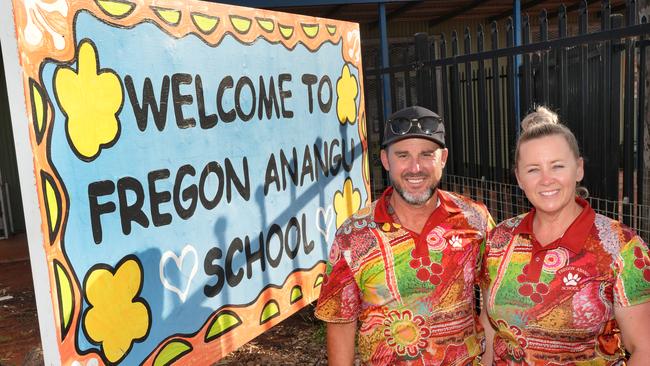
The upgrade, carried out by Sarah Constructions, includes the replacement of many old buildings, new food technology and administration facilities and a roof over the outdoor play area.
The school, which has about 60 students enrolled from preschool to year 12, has won recognition for its women’s sexual health education program Kungka Ninti (the Pitjantjatjara translation of “smart girls”) and has started a similar program for boys and men called Kunpu Maplas, which aims at developing strong, respectful young men through mentoring and cultural activities.
The school has also developed a series of “I Can” books to teach positive behaviours for learning and wellbeing.
Porzio says the fact she is choosing to raise her young family here should be enough proof anyone needs to dispel concerns about community crime or violence. Children’s lives in Fregon are like a throwback to the 1980s, where they can play on the streets or in the creek until dusk, entertaining themselves without the social media-inspired pressures faced by their city cousins.
“My daughter got here when she was six – she speaks French, English and Pitjantjatjara and she doesn’t want to leave,” Porzio says. “When we went back to Adelaide for a year she went into mainstream (education) and hated every second of it.”
Her family, like most teachers in the Lands, returns to the big smoke to visit family and friends, attend medical or other appointments and restock on supplies during the school holidays. Sometimes they even visit her family in France.
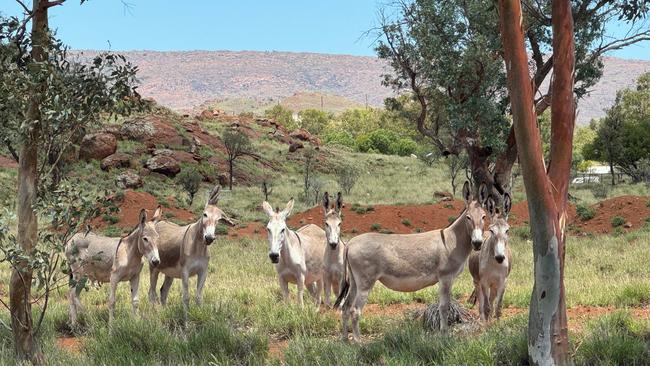
It’s a 15-hour drive back to Fregon from Adelaide but every time they make it, there’s a point she looks forward to just north of Marla where they turn off the Stuart Highway and head west on the unsealed road to Fregon. It’s then when she lets out a sigh of relief. She’s back in her happy place.
“Every time we turn off and I hit the red dirt I’m like ‘aaaah’,” she says. “It’s just the pace … I don’t know. Don’t get me wrong, we’re still just visitors here but I think I’ll be connected to this land for the rest of my life.
“There’s an old saying that I heard when I first came here, from an Anangu elder, who said that the red dirt of the APY Lands – it either gets in your eyes, or it gets in your heart.”
For Porzio, her young family and the other teachers we met throughout the Lands, the dirt appears well and truly entrenched in their hearts.





